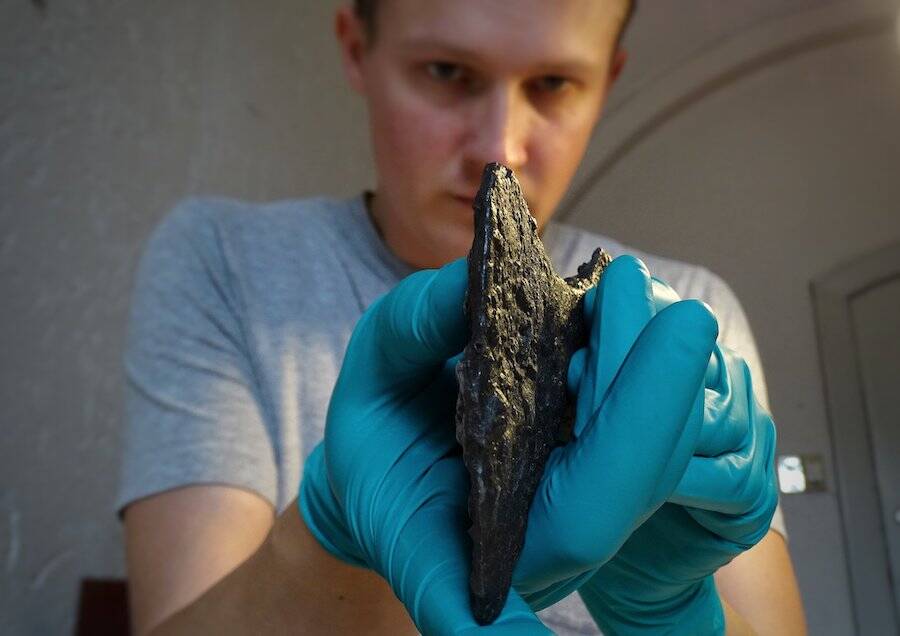Warrior Woman And Her Axe Found In 1,000-Year-Old Viking Cemetery

Mira FrickeA piece of the ancient remains of a likely-Slavic warrior woman recently found on the Danish island of Langeland.
Researcher Leszek Gardela from the University of Bonn initially thought this buried warrior woman to be a Viking. The ancient remains were, after all, found buried in a Viking cemetery on the Danish island of Langeland. The axe alongside her, however, suggested otherwise.
Published in Science of Poland, the study explained that this was actually a Slavic warrior woman. Gardela’s hypothesis originated from the weapon, which was much more typical of one culture than another.
“So far, no one has paid any attention to the fact that the axe in the grave comes from the area of the southern Baltic, possibly today’s Poland,” she said.
To her point, the design of the warrior’s 1,000-year-old burial place firmly hinted Gardela was right. The chambered construction, common in cemeteries in the southern Baltic region, strongly pointed toward more Slavic origins than Nordic ones. So how did she get there?
As Gardela explained, the Danish territory in question was a melting pot during the Middle Ages. Scandinavians and Slavs lived side-by-side, with the researcher’s own study on the Slavic-Danish burial indicating previous consensus that argued against the presence of Slavic warriors in the region had been off-base.
The document, a study of ninth- and 10th-century warrior women called Amazons of the North, encompasses burial sites in Denmark, Norway, and Sweden. Gardela was inspired by the aggravation that old Icelandic texts placed strong Valkyrie women alongside mythical beings such as trolls and dragons.
“There are many female warriors — they participate in expeditions in full gear, they even lead entire armies to attack,” said Gardela.
Fortunately, the remains of this particular warrior woman were preserved enough to cement that point for good.





